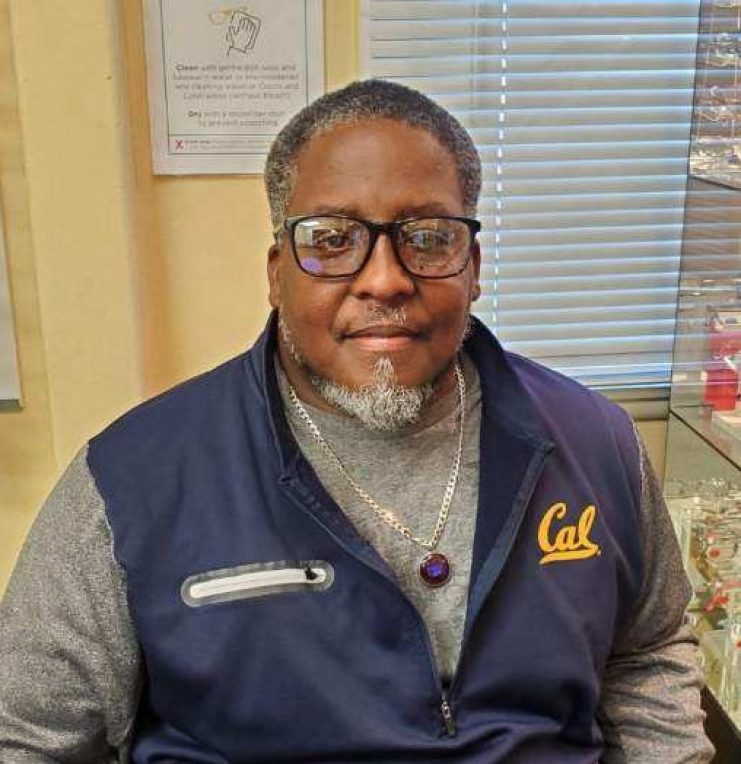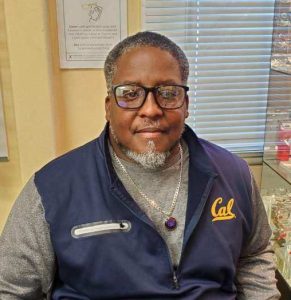
Growth Mindset: Shifting from Equal to Equitable Teaching Practices
During my Public Health Solutions class at Castlemont High School in Oakland, we began discussing careers in the healthcare field and what educational background is needed to be qualified. When, out of the blue, a student eloquently said, “877 CASH NOW…it’s my money and I want it now!” All the students began to laugh! She was quoting a TV commercial we all have seen numerous times. She went on to share that after her dad lost his job during the pandemic, she was forced to help support her family by getting a job at a fast food restaurant. Based on the economy and the current minimum wage level, she needed to work seven days a week to make sure they could pay the rent and have money left over for food. Sadly, I began to hear several echoes of “me too” and “so do I” throughout the room.
The context:
As we enter into the 21st century, we have to train our students to think in different ways than we have in the past to solve problems. I believe that there are two major areas we need to focus on to create productive, contributing citizens in the future. The first is, developing relationships with community and industry partners to allow students to gain real-world experience with solving problems in underserved and low-income communities. The second is, developing a curriculum that focuses on academics and practical skills, which will allow our students to learn both the Career & Technical Education and academic approach to learning. “The reality is that current CTE courses and programs do a better job for students in both areas. Those are both technical skills and soft skills” (Reinventing the American High School for the 21st Century, 2020). This curriculum design consists of combining theory with application to reach a conclusion to a problem.
Our society has not seen the level of rapid change and harmful disruption to our ecosystems that we are seeing now, especially not occurring simultaneously. In my opinion, either our current society does not possess the deep awareness of the problems of gentrification, homelessness, global warming, and unemployment that plague our low-income and underserved communities, or they simply don’t care. Therefore, hard and soft skills will prove to be essential for our youth in the future to survive in this world. By teaching our students to be higher order thinkers, we are empowering them to find solutions to the problems affecting their communities. The practice of personal health and understanding financial literacy are two of the most impactful skill sets for overall health. These two concepts move beyond important and become necessary for the sustainability of our schools and communities.
Practicing personal health and understanding financial literacy both fall under the Six Social Determinants of Health, which I address in my course: (1) Money/Income, (2) Food, (3) Social Environment/Relationships, (4) Housing, (5) Education, and (6) Safety. I help students maintain their personal health by using root cause analysis and public health advocacy to help them identify and find practical solutions to issues in their community like toxic stress and Adverse Childhood Experiences (ACE’S). In addition, we have identified that financial literacy can lead to financial empowerment for individuals and communities. Some could even argue that it is an immediate need and is fundamental in becoming ready for college or any career path. “Career-ready individuals also understand that financial literacy leads to a secure future that enables career success” (Standards for Career Ready Practice, 2020). Therefore, we address financial literacy through a financial freedom unit addressing issues ranging from money management to investment practices.
To teach personal health, Castlemont and our Community Health Equity Academy (CHEA) provide our students with a wellness center and we take wellness field trips to help model action-based solutions. We also discuss healthy coping strategies for issues like ACE’S and toxic stress. To build students’ financial literacy, teachers from three courses (Algebra 2, Public Health Solution, and Intro to Business) work together to plan a Financial Literacy unit that explores concepts like cost of living adjustments (COLA), inflation, and financial freedom. Some concepts that we cover are financial access, credit cards management, student loans, personal budgeting, and saving. We invite guest speakers in the classroom and organize a trip to a credit union where 30-50 students have an opportunity to open checking/savings accounts.
The challenge:
Castlemont has a very large English Language Learner (ELL) population. This ELL population represents 35% of my classes. As a public health teacher, I provide students with soft and hard skills to be successful for college and career. These skills show up in my classroom as students acquiring industry concepts and vocabulary, academic discussion, writing with evidence, and personal health practices. However, many of my ELL students are entering my classroom with little to no grasp of the English language. This poses a huge challenge for me because we have over 10 different languages identified at Castlemont, which makes it impossible to support all the students with scaffolded linguistic support. In some cases, like the Guatemalan dialect (Mam), there is little to no written language, which makes it impossible to translate written information.
As a result, many of my ELL students were struggling with the public health theory and concepts. Towards the middle of the second marking period, I began to notice a trend in ELL students in my class. The original data showed that many of my ELL students were getting D/F, which led me to a deep data dive supported by the Lead by Learning inquiry group. The inquiry group is a program with the ELLMA, English Language Learner Multilingual Achievement Office in Oakland Unified School District, that helps teachers who are struggling with ELL students by supporting them with strategies and skills to support this particular population using a collaborative inquiry, district-wide professional learning community approach. During my data dive into student work, grades, and chronic absences, I learned several things about my students and myself. With the support of a great coach in the inquiry group, I was able to see that my students were struggling with the concepts because the tasks I was asking them to do were entrenched solely in scholarly academia and not basic skill acquisition. I was preparing all my students for college and career the same way, regardless of English proficiency. I realized my approach to teaching was Brick & Mortar and my focus was on Equality. I was giving all my students the same work and expected them to learn it in its entirety or suffer the consequences. As a result, I realized many of my ELL students became frustrated and I started to see them disengage and avoid coming to my class.
The shift:
After attending many monthly meetings with Lead by Learning and talking with my coach, I realized that I had to change my approach to the ELL instruction; but more importantly, I had to shift my mindset from providing equality to providing equity for all my students. This meant learning more about each of my student’s individual learning needs and adapting my teaching strategies to support several different learning styles. In addition, I increased the variety of modalities to support student success.
Rather than asking my ELL students to explain complicated concepts and theories in their own words, I asked students to sort and match the concepts and vocabulary with the definitions. In addition, I provided scaffolding for the lessons so the ELL students could access the requisite skills necessary for mastery of the subject matter. I baked in more individual check-ins with my ELL students and found out some of them have already started their path toward their dream career. Therefore, my focus for these students was to meet them where they were and provide them with specific skills to help them advance in their current job.
I made great progress in supporting student learning. Over the next few months of instruction, I saw a huge increase in ELL attendance and a significant increase in engagement of student learning. In a focus group I conducted towards the end of the semester, I asked the ELL students, what made them more engaged. They mentioned, “It is the way you teach the class. I am so happy you have decided to help me better. Your scaffolding has helped me learn better!”
Ultimately, with the change in instructional methods, the students had a better understanding of public health concepts and theory. In addition, student attendance increased and 90% of the students with D’s and F’s in the first two marking periods changed to at least a grade of C or better. More than 60% of that D or F group received a B or A the following marking period. This change was a helpful practice for my ELL students and an enlightenment for my teaching practice as a whole.
 Dr. Devynn Taylor is currently the Director for the Community Health Equity Academy at Castlemont High School. In addition, he is a full-time instructor for the public health pathway teaching both the Public Health Advocacy and Public Health Solutions (Senior Capstone) courses. As a community educator, his goal is to help his students understand, dismantle, and transform the social determinants that contribute to health inequities in disenfranchised and underserved communities. His personal goal is to continue to advance his leadership skills through curriculum development and implementation. When he is not in the classroom, he enjoys being the head coach for the Castlemont tennis team.
Dr. Devynn Taylor is currently the Director for the Community Health Equity Academy at Castlemont High School. In addition, he is a full-time instructor for the public health pathway teaching both the Public Health Advocacy and Public Health Solutions (Senior Capstone) courses. As a community educator, his goal is to help his students understand, dismantle, and transform the social determinants that contribute to health inequities in disenfranchised and underserved communities. His personal goal is to continue to advance his leadership skills through curriculum development and implementation. When he is not in the classroom, he enjoys being the head coach for the Castlemont tennis team.
Interested in working with Lead by Learning to support professional learning for your educators? Connect with a member of our team to learn more about our partnerships.
